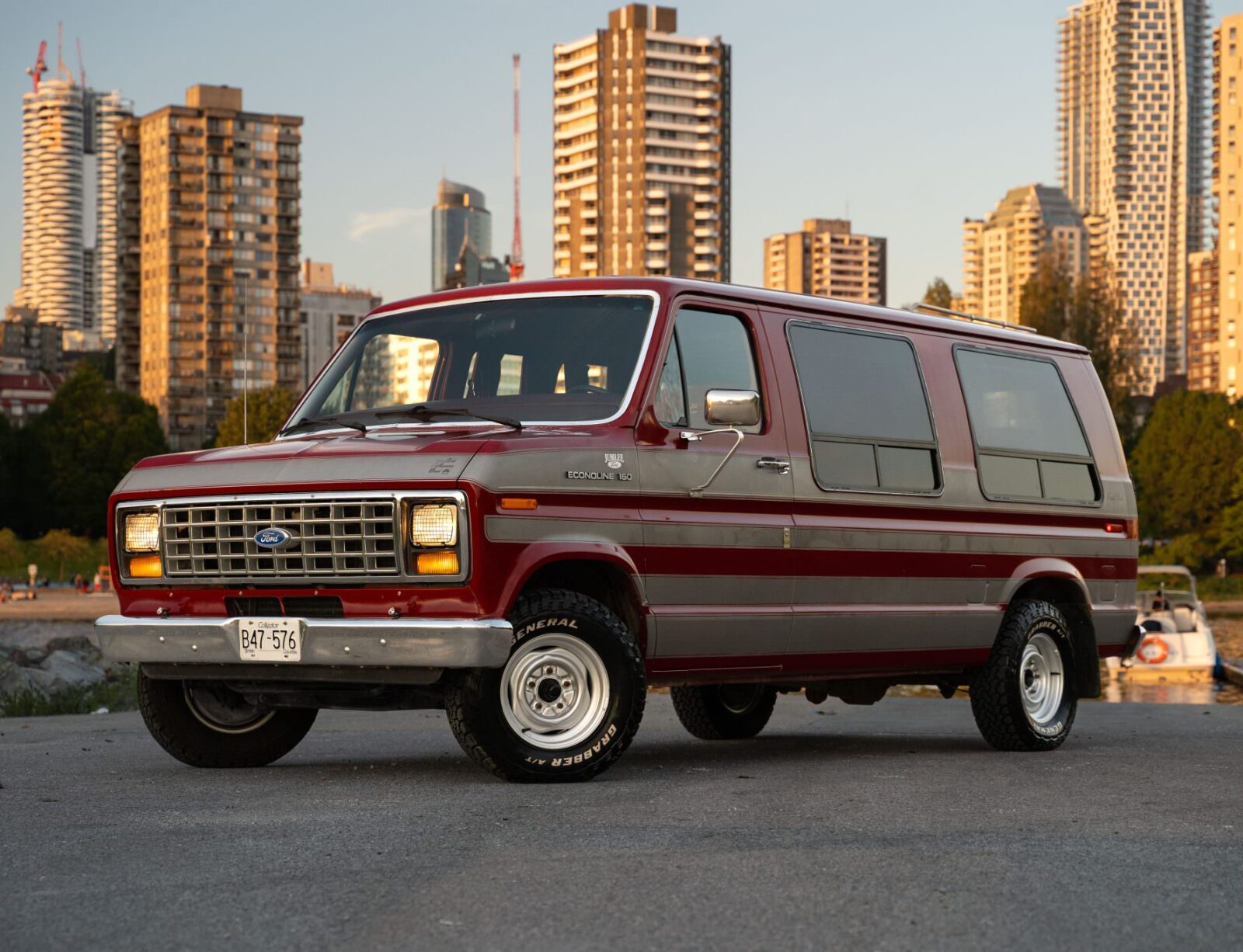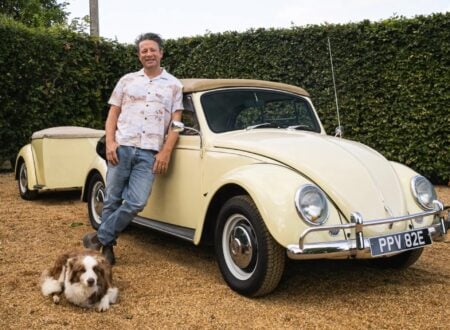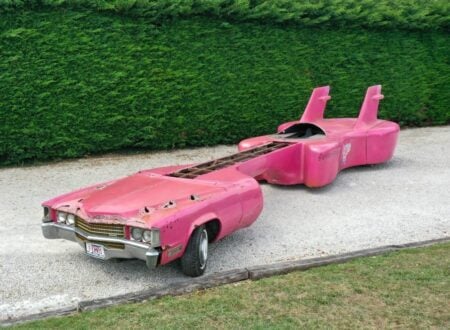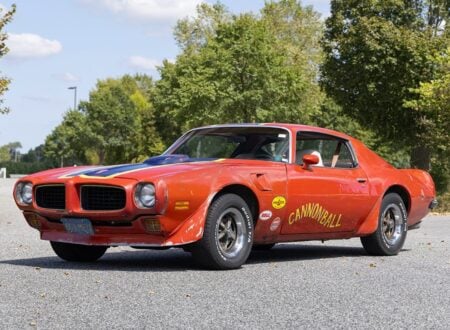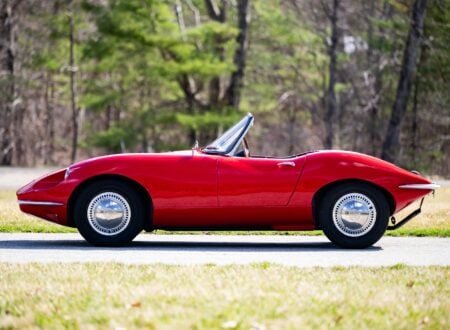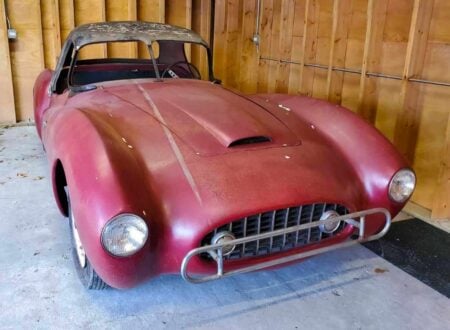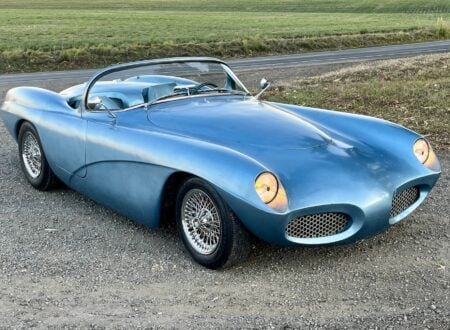This 1989 Ford Econoline E-150 van was used for many years by the Royal Canadian Air Force’s Snowbirds Air Demonstration Squadron, based out of Moose Jaw, Saskatchewan.
It was converted in period by North American Coach into a luxury transport, with captain’s chairs, custom paintwork, red velour type upholstery, privacy shades, woodgrain trim, and a centrally-mounted table. It’s now being offered for sale by Captain Sarah Dallaire, a Snowbirds pilot, out of Vancouver, British Columbia, Canada.
Fast Facts – An Ex-RCAF Snowbirds 1989 Ford Econoline
- This 1989 Ford Econoline E-150 van was converted by North American Coach into a luxury transport vehicle specifically for the Royal Canadian Air Force’s Snowbirds Air Demonstration Squadron. It features armchairs, custom paintwork, red velour upholstery, privacy shades, woodgrain trim, and a centrally-mounted table.
- The Snowbirds Air Demonstration Squadron traces its origins back to the 431 (Iroquois) Squadron, a Royal Canadian Air Force bomber squadron that flew missions over Europe during World War II. After the war, the squadron was reformed a couple of times before becoming the official Canadian Forces Air Demonstration Team in 1971, flying the CT-114 Tutor jets.
- In 1978, the Snowbirds were officially designated as the 431 Air Demonstration Squadron and based at CFB Moose Jaw, Saskatchewan. Their primary mission is to demonstrate the high level of training and proficiency of the Canadian Forces through precise aerial displays involving up to nine aircraft in tight formations.
- This specific 1989 Ford Econoline E-150 van served as the official support vehicle for the Snowbirds Air Demonstration Squadron at 15 Wing Moose Jaw for many years. After retirement, it was purchased by Captain Sarah Dallaire, just the second female Snowbirds pilot, who is now offering it for sale on Bring a Trailer out of Vancouver, British Columbia.
The RCAF Snowbirds Air Demonstration Squadron
The early origins of the Snowbirds trace back to Second World War. The 431 (Iroquois) Squadron was first established on November the 11th, 1942, at Burn, Yorkshire, England, as part of the Royal Canadian Air Force’s (RCAF) contribution to Bomber Command. Flying Wellington, Halifax, and Lancaster bombers, the squadron engaged in missions over Europe, contributing to the Allied war effort. The unit was disbanded after the war on September the 5th, 1945.
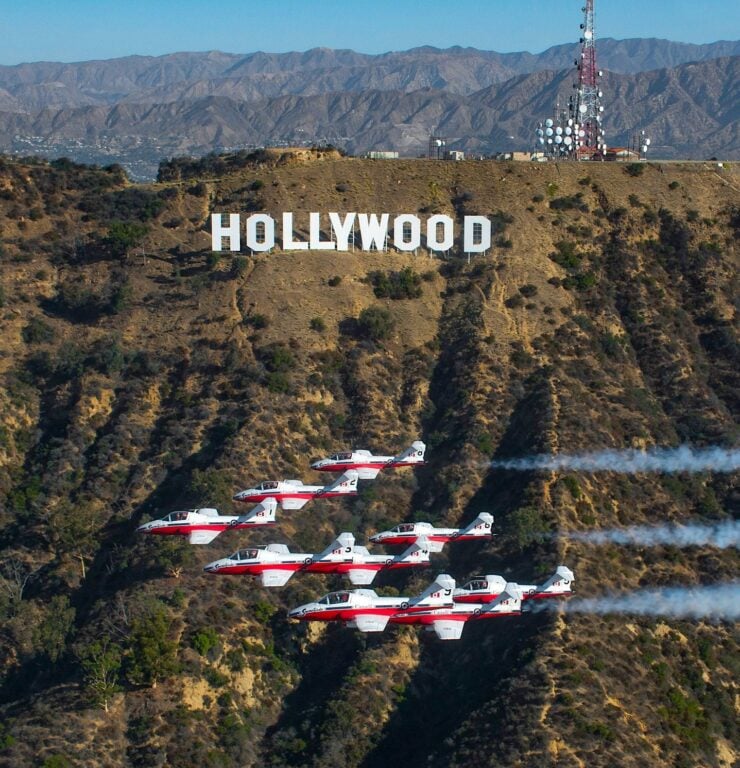

The squadron was briefly reformed on January the 18th, 1954, at RCAF Station Bagotville as the 431 (Strike/Reconnaissance) Squadron, flying the Avro CF-100 Canuck interceptor. This incarnation of the squadron, however, was short-lived and was disbanded again on September the 1st, 1957.
The shift from combat operations to aerobatic display began during Canada’s centennial celebrations in 1967. The Golden Centennaires, an aerobatic team formed for the occasion, flew the Canadair Tutor jets and captivated audiences nationwide. Their incredible popularity laid the groundwork for a permanent aerobatic squadron.
In 1971, the 2 Canadian Forces Flying Training School (2 CFFTS) at CFB Moose Jaw formed a ten-strong aerobatic team using CT-114 Tutor jets, named the “Snowbirds” after a contest among the base personnel. The Snowbirds quickly gained popularity for their scalpel-sharp maneuvers and entertaining shows, leading to their official designation as the Canadian Forces Air Demonstration Team.
On April the 1st, 1978, the Snowbirds were officially designated the 431 Air Demonstration Squadron, reviving the name from the earlier wartime bomber squadron. Stationed at CFB Moose Jaw, Saskatchewan, the squadron continued to use the CT-114 Tutor, a jet trainer known for its agility and reliability, making it ideally suited for the kind of precision flying required in aerobatic displays.
The Snowbirds’ primary mission has been to demonstrate the high level of training and proficiency of the Canadian Forces personnel through aerial displays. They perform complex routines involving up to nine aircraft in tight formations, often with just a few feet separating each plane. Their performances have become a staple at air shows across Canada, the United States, and further afield.
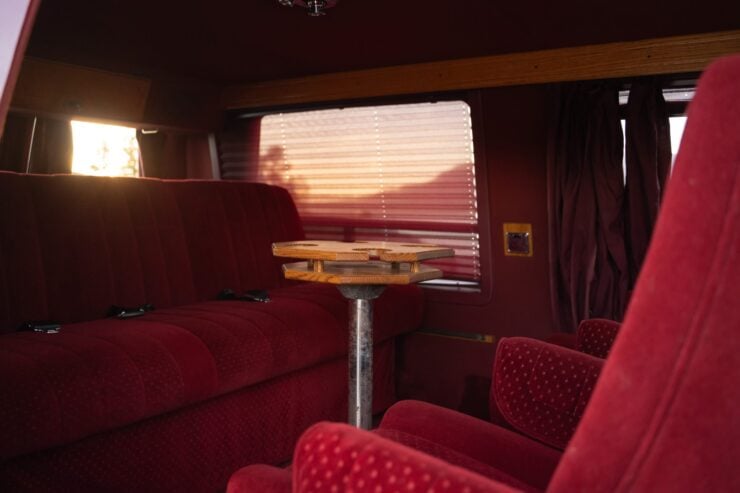

The Ex-RCAF 1989 Ford Econoline E-150 Shown Here
The vehicle you see here is a 1989 Ford Econoline E-150 conversion van, it was modified when new by North American Coach of Edmonton, Alberta and turned into a luxurious people mover specifically for the Royal Canadian Air Force’s Snowbirds Air Demonstration Squadron as a support vehicle.
The van left Ford as a fairly standard Econoline E150 finished in Medium Red, fitted with air-conditioning, a 4-speed automatic transmission, front disc and read drum brakes, and a 5.0 liter V8 with electronic fuel injection.
North American Coach modified the van significantly with red velour upholstery and captain’s chairs up front and in the second row, with a bench seat third row that can fold down. In the rear there is also a wooden table with cup holders, and it can be removed when necessary.
The 1989 Econoline E-150 was a member of the third generation of the Ford E-Series platform. It was also one of the most successful, winning the 1978 Motor Trend “Truck of the Year” award and becoming a best-seller.
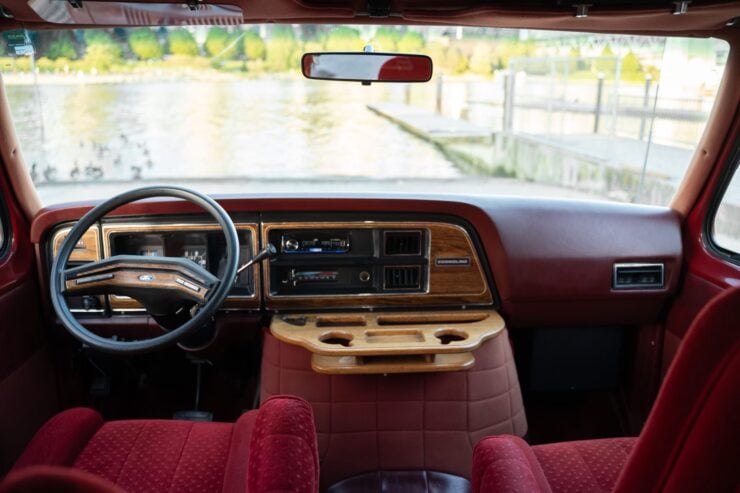

This van was used as the official support vehicle for the Royal Canadian Air Force’s Snowbirds Air Demonstration Squadron at 15 Wing Moose Jaw in Moose Jaw, Saskatchewan for many years. After retirement it was bought and used by Captain Sarah Dallaire, the second female Snowbirds pilot in the organization’s 48-year history.
Captain Dallaire is now offering the van for sale on Bring a Trailer out of Vancouver, British Columbia, Canada at no reserve with a clean Carfax report and British Columbia registration. If you’d like to read more about it or register to bid you can visit the listing here.
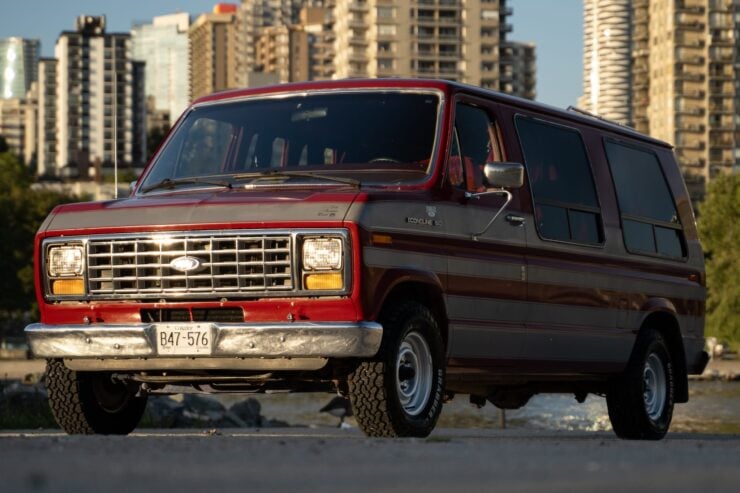
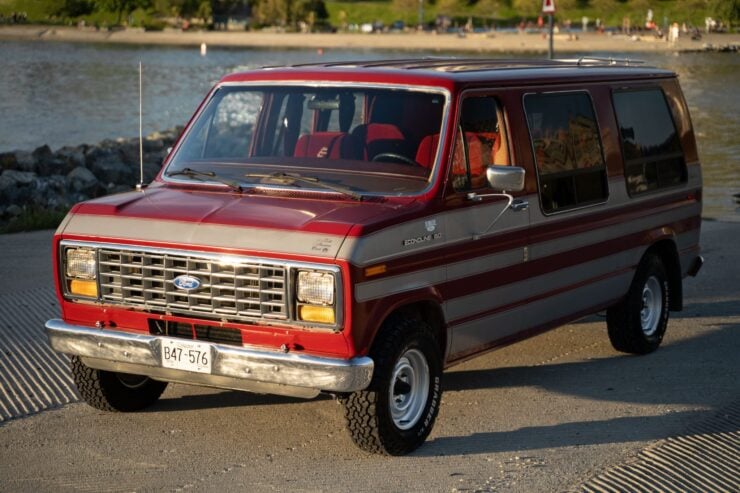
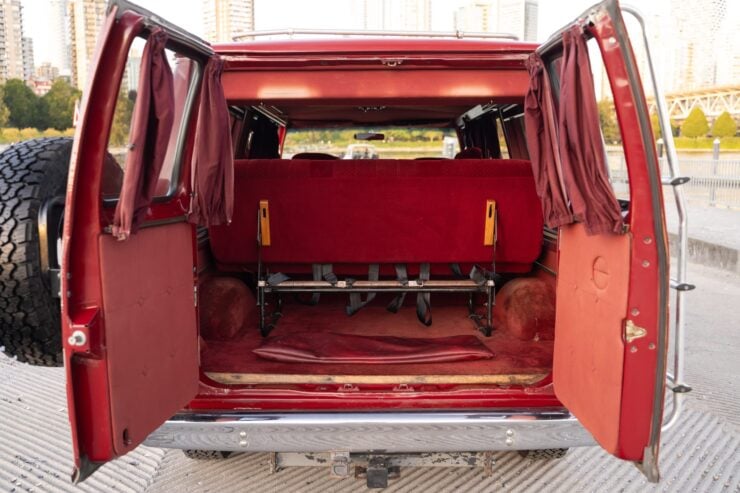
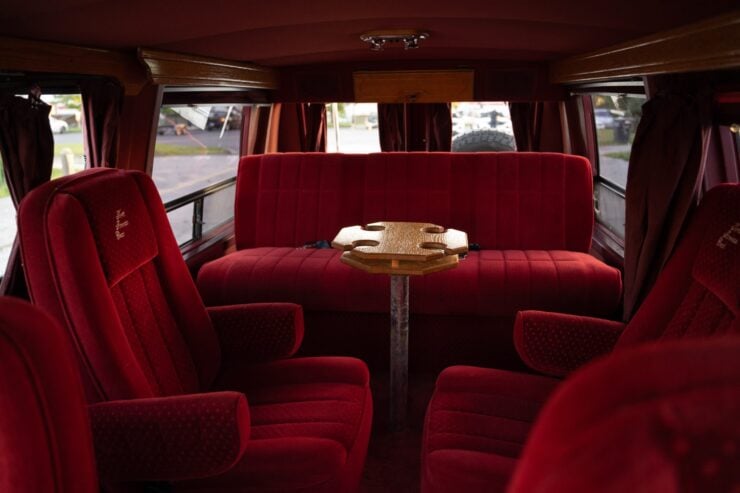
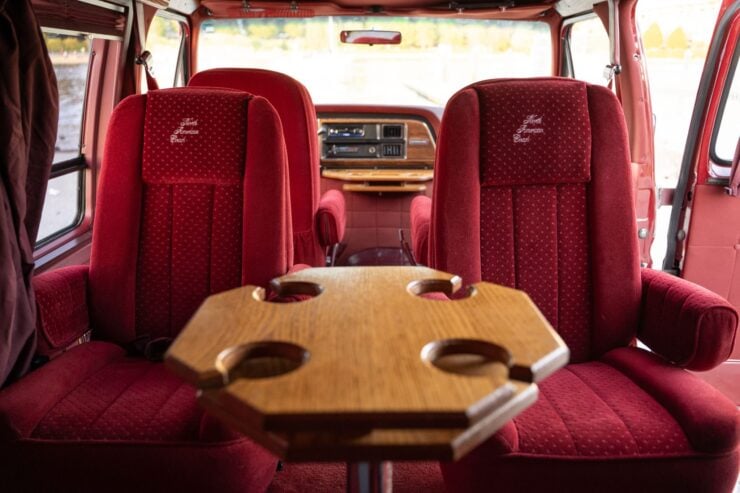
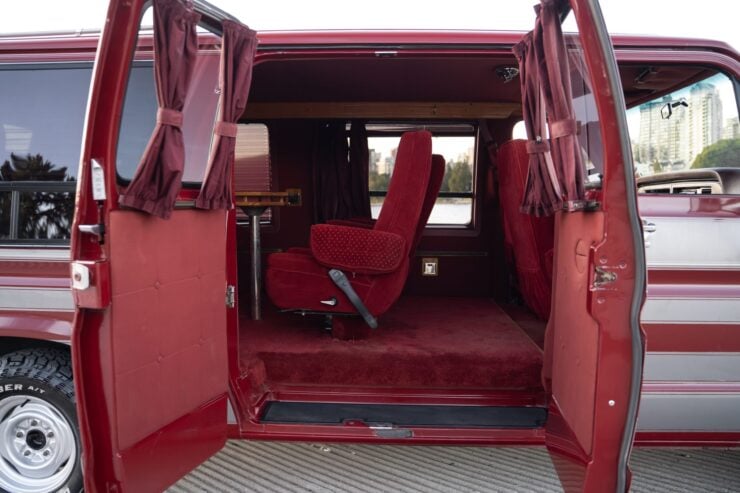
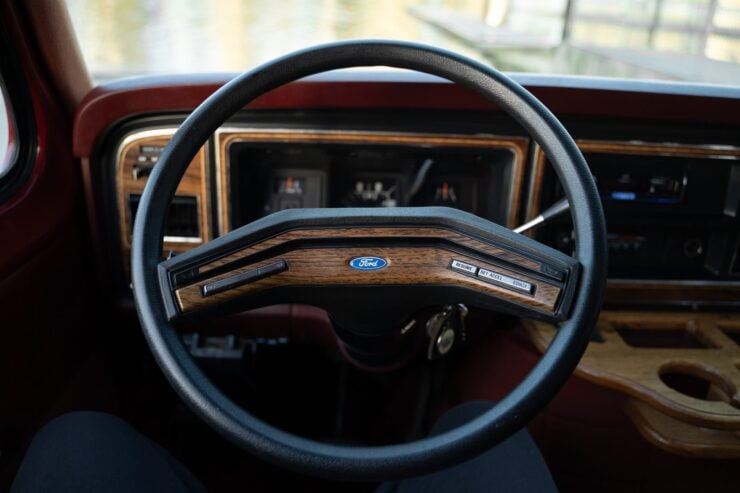
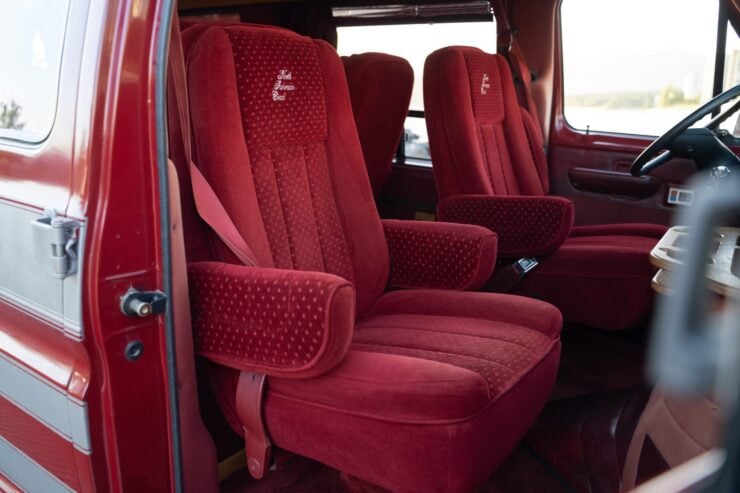
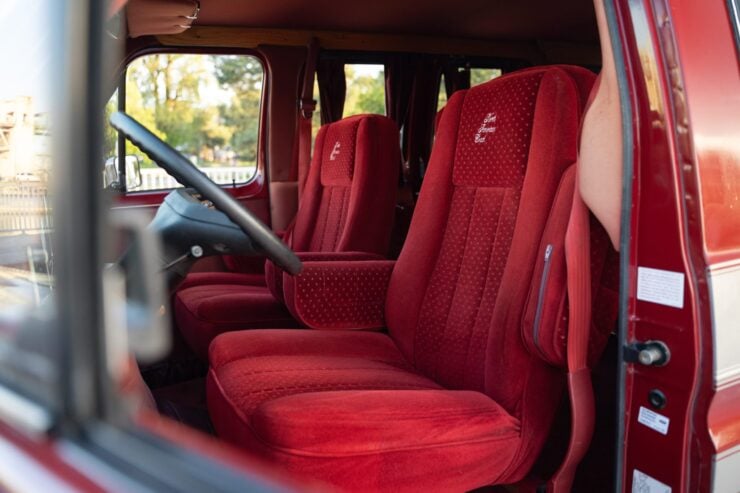
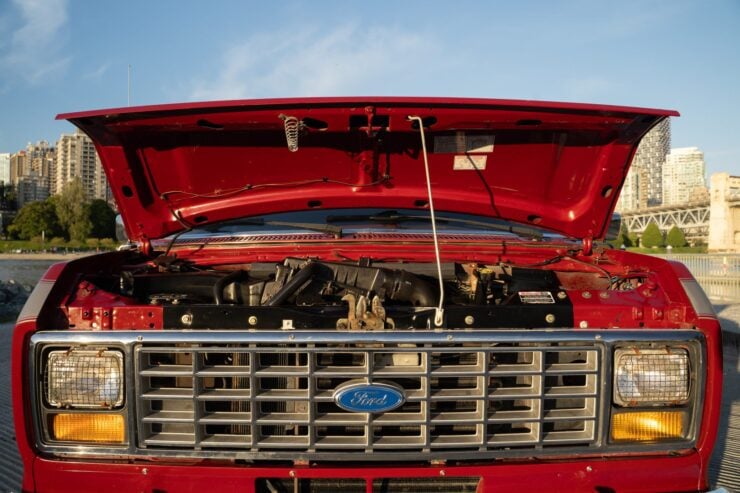
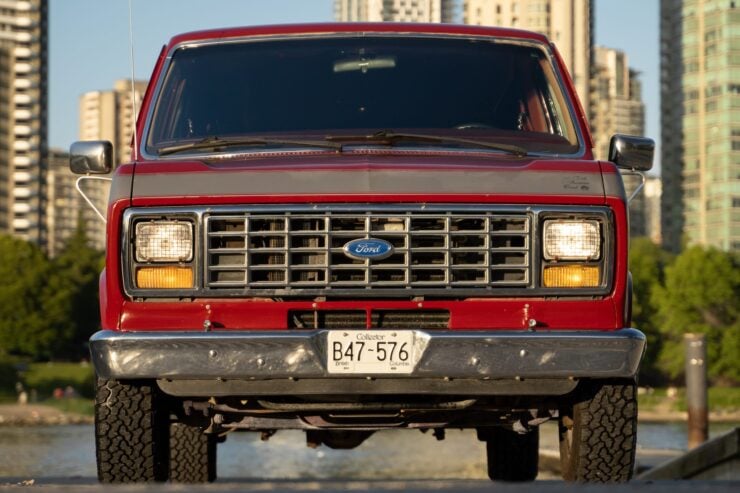

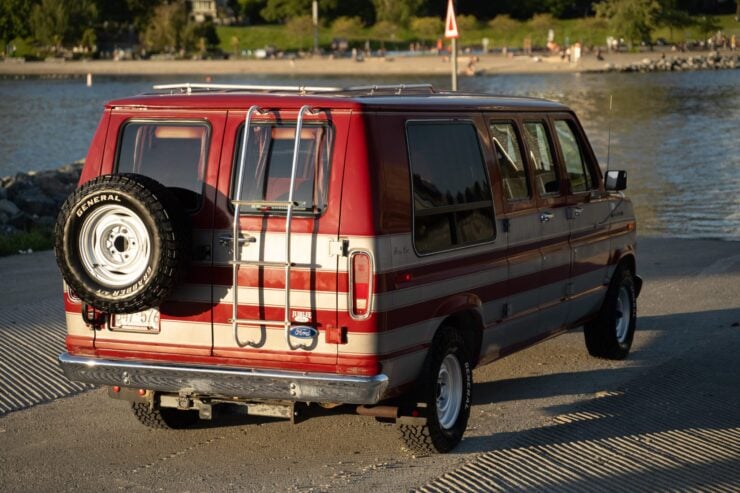
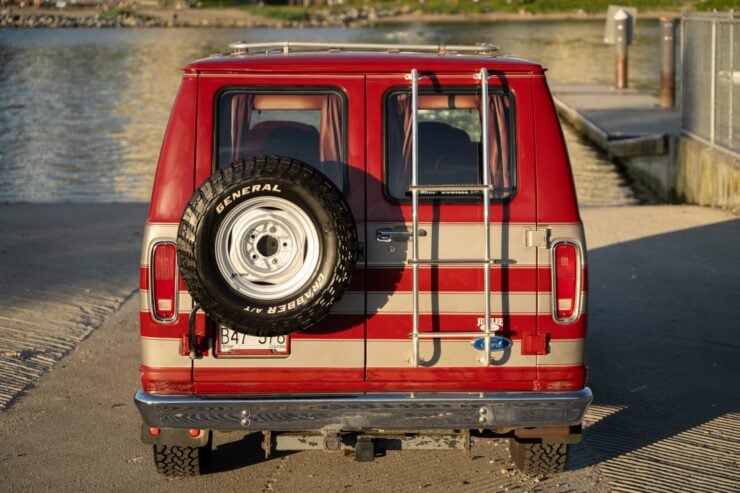
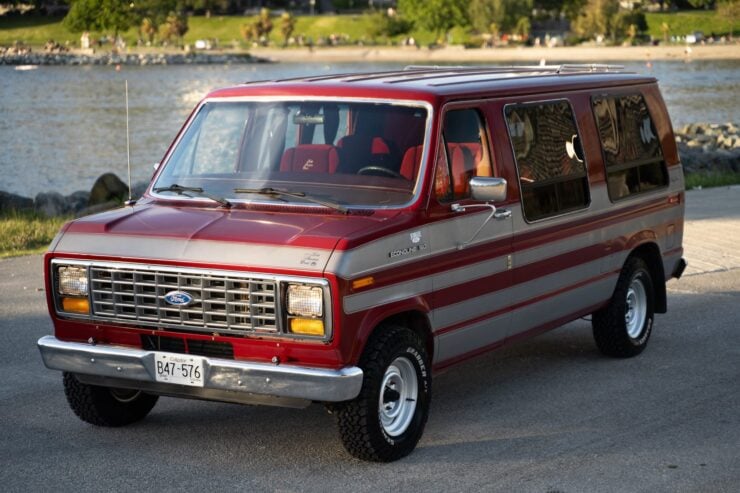
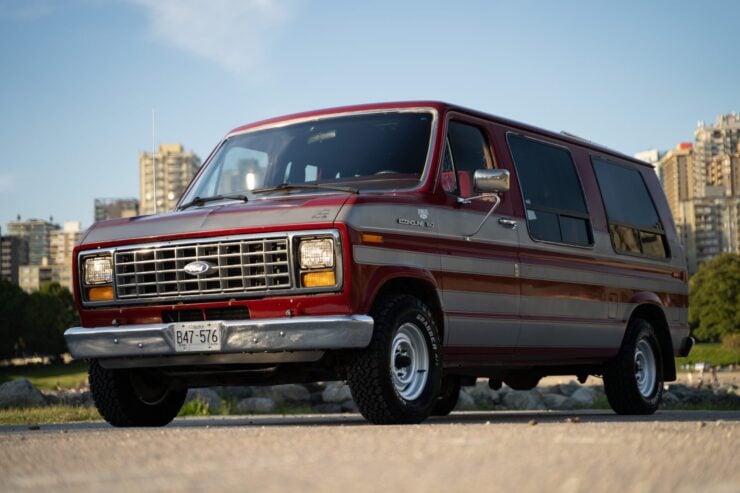
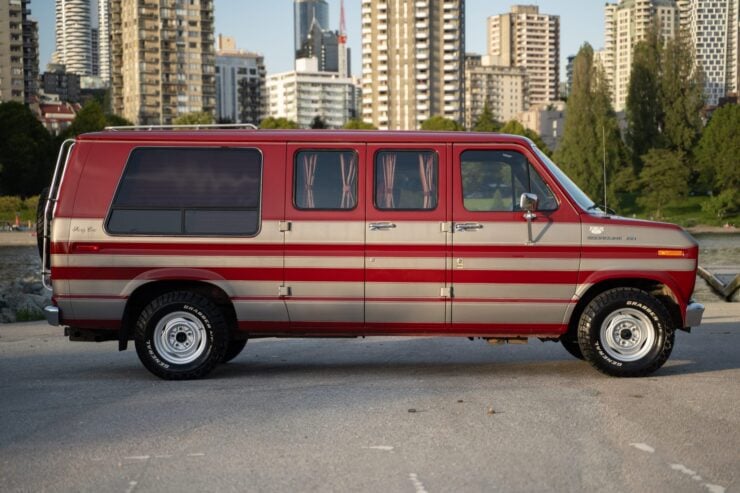
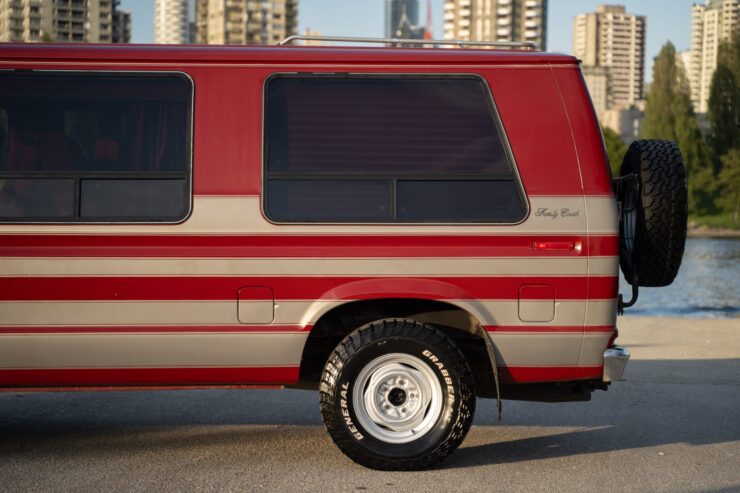
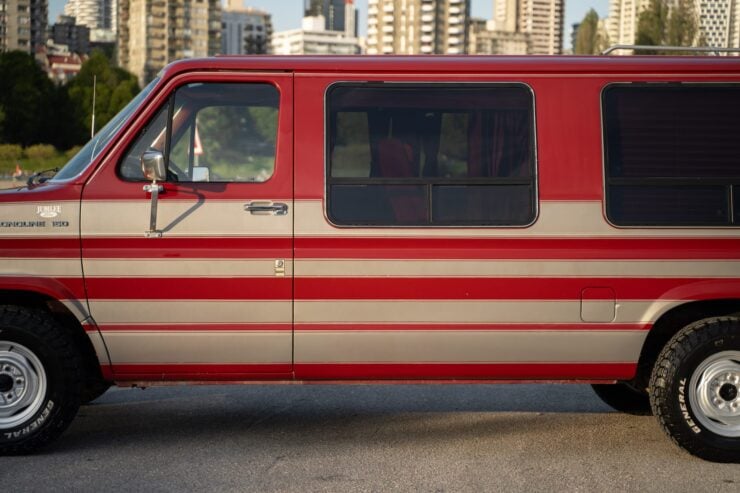
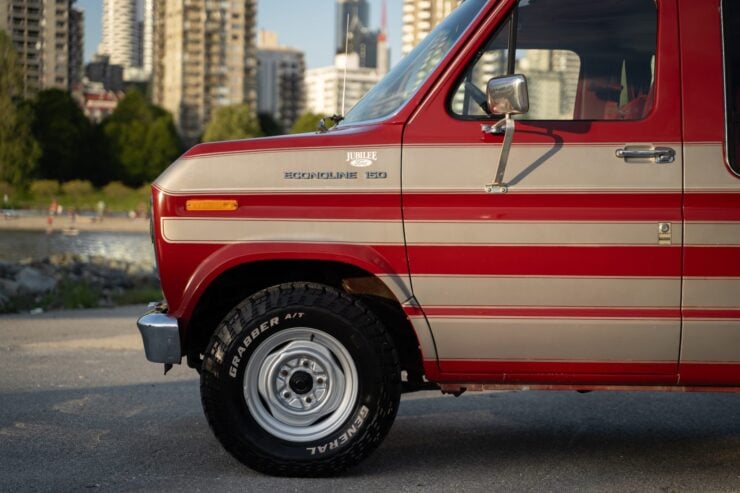
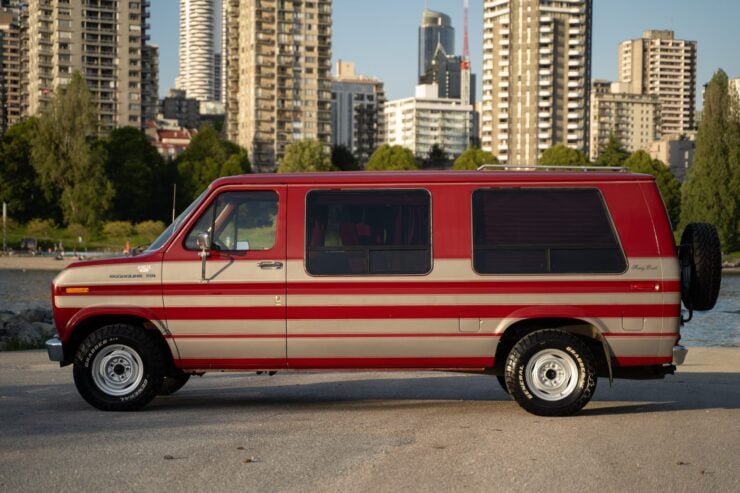
Images courtesy of Bring a Trailer

